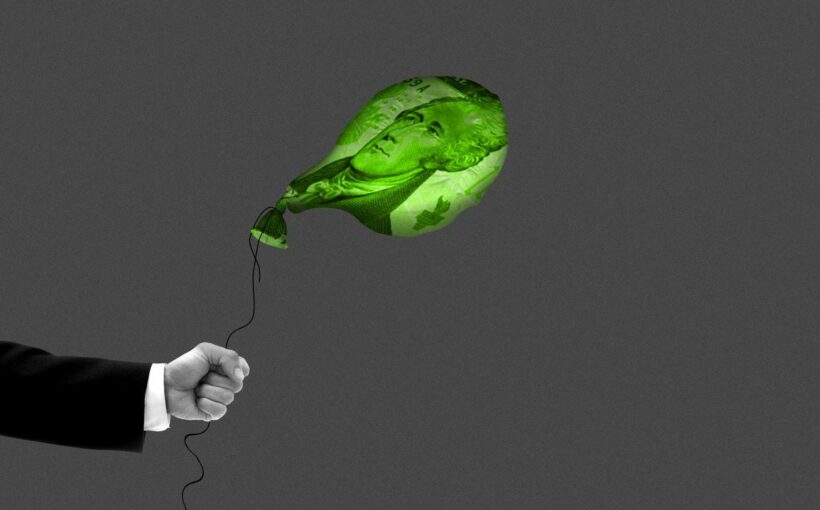Illustration: Eniola Odetunde/Axios
For a while there, it was looking like a dream scenario for the U.S. economy just might be coming true: inflation falling while the job market remained robust, and the pain caused by Federal Reserve tightening confined to a few industries.
- Alas, it hasn't quite worked out that way in the recent run of data, with prices staying stubbornly high.
Why it matters: There is little doubt at this point that the Fed has the resolve to keep raising interest rates if inflation pressures don't dissipate. But it is looking more likely that it will take a more serious economic downturn than seen so far to make that happen.
Driving the news: New data out Friday morning showed consumer spending and inflation heated up in January.
- Meanwhile, a paper presented Friday morning at a high-profile University of Chicago conference argues that, based on a study of past periods, "an immaculate disinflation would be unprecedented."
- The paper was presented at the Booth School of Business Monetary Policy Forum, with (by our count) seven out of 19 members of the Fed's policy-setting committee participating.
The details: The paper's five authors, including former Fed governor Frederic Mishkin, examined periods of disinflation in the post-World War II era in four countries. They calculated a "sacrifice ratio," i.e., how much economic pain, in the form of unemployment and other measures, it took to bring down inflation.
- The results suggest that a mild recession will be necessary for inflation to come down to the Fed's 2% target.
- "Our historical analysis and modeling exercise lead us to conclude that the Federal Reserve and other key central banks will find it hard to achieve their disinflation goals without a significant sacrifice in economic activity," wrote Mishkin, along with Stephen G. Cecchetti, Michael Feroli, Peter Hooper and Kermit Schoenholtz.
Yes, but: The open question is whether post-pandemic dynamics are so unique that relying on historical parallels doesn't really make sense. That is exactly what Fed governor Philip Jefferson, a discussant of the paper, emphasized Friday morning.
- "History is replete with confounding factors that make parsing difficult," Jefferson said.
- "The idiosyncratic nature of the pandemic implies that economic models, while still useful in many respects, are going to have limited applicability," he added. "Taken at face value, the model assumes, as all models do, that the past tells policymakers what they need to know."
- "But current inflation dynamics are being driven by some pandemic-specific factors not seen in the historical data," he said, and as such, policymakers need to look at a broader range of factors.
Source: Read Full Article

